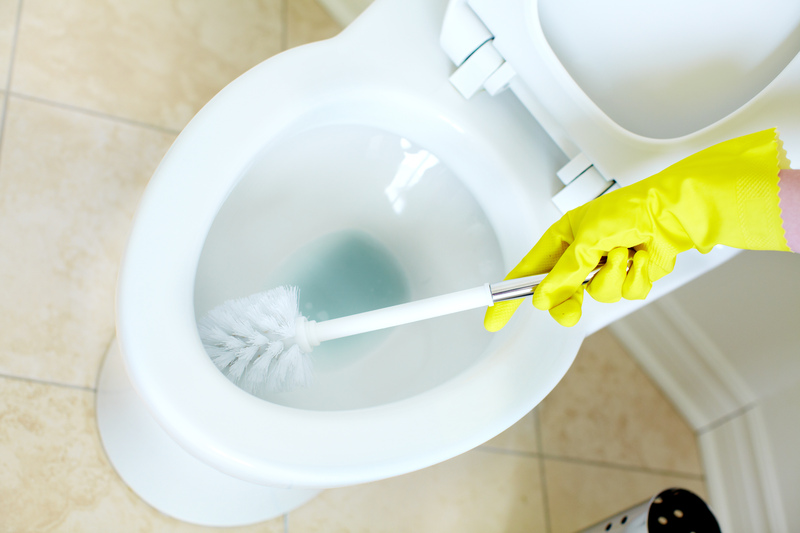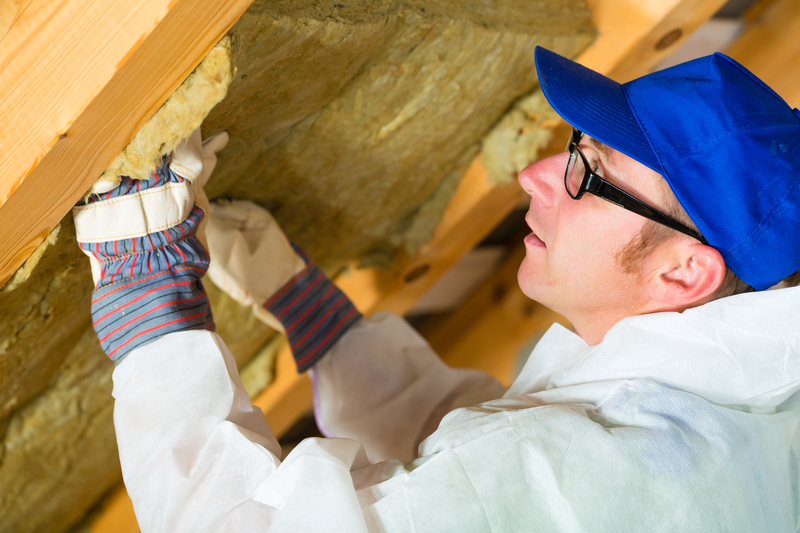Defeat Mould on Window Sills with These Techniques
Posted on 08/09/2025
Defeat Mould on Window Sills with These Techniques
Are you struggling with unsightly black mould spores spreading across your window sills? You're not alone. Mould growth on window sills is a common household issue, especially in cooler or humid climates. Not only does it damage wood, paint, and sealant, but it can also trigger allergies and pose serious health risks. Understanding how to remove mould from window sills effectively--and prevent it from returning--can vastly improve your home's air quality and aesthetics.
Why Does Mould Develop on Window Sills?
Before we explore techniques to eliminate mould from window sills, it's crucial to understand why it appears there in the first place. Window sills are especially vulnerable to mould due to a few key factors:
- Condensation: Windows are natural cold spots, making them prime areas for moisture to condense, especially when warm indoor air meets chilled window glass.
- Poor Ventilation: Limited airflow near windows allows humidity to linger, creating a perfect environment for mould spores to thrive.
- Organic Debris: Dust, dirt, and organic particles on sills provide nutrients for mould growth.
- Water Ingress: Leaky windows or faulty seals may allow rainwater to infiltrate and saturate window frames and sills.
Once you understand these factors, targeting the root causes of mould on window ledges becomes much more manageable.

The Dangers of Mould on Window Sills
Ignoring mould isn't just an eyesore--it's a health hazard. Mould on window frames releases spores and mycotoxins into the air, which can lead to:
- Allergic reactions - such as sneezing, coughing, watery eyes, and skin irritation
- Respiratory problems - especially for those with asthma, allergies, or weakened immune systems
- Long-term exposure risks - including chronic bronchitis and other lung conditions
Therefore, removing mould from windowsills promptly is vital for the health and safety of everyone in your home.
Essential Tools and Supplies for Eliminating Mould
To effectively combat mould on window sills, you'll need some essential tools and cleaning agents:
- Protective gear: Gloves, goggles, and a mask (preferably an N95 respirator) to avoid inhaling spores.
- Cleaning supplies: Non-abrasive sponges, microfiber cloths, old toothbrush, bucket, and soft-bristle brush.
- Detergent: Mild dish soap or multi-purpose cleaner.
- Disinfectant: White vinegar, hydrogen peroxide, or a specific anti-mould cleaner.
- Spray bottle: For applying cleaning solutions evenly.
- Old towels or rags: For drying and protecting surfaces during cleaning.
*Never mix chemical products, such as bleach and vinegar, as this can release toxic fumes.
Step-by-Step: How to Remove Mould from Window Sills
Now, let's delve into the best techniques to get rid of mould on window sills and restore your windows to their pristine condition.
1. Prepare the Area
- Open the window to provide ventilation and prevent the accumulation of fumes.
- Lay towels around the sill to protect your floors and walls.
- Don your protective gear to avoid contact with spores.
2. Dry Brush Loose Mould Spores
- Use a dry brush or an old toothbrush to gently dislodge loose mould.
- Vacuum the area with a HEPA filter vacuum to trap spores (avoid standard vacuums which may simply recirculate spores).
3. Clean with Soap and Water
- Mix warm water and a few drops of mild dish soap.
- Scrub the window sill gently with a sponge or brush to remove surface mould.
- Wipe with a damp microfiber cloth.
4. Apply an Anti-Mould Solution
- Fill a spray bottle with white vinegar or hydrogen peroxide (do not mix these together).
- Spray liberally over the affected area and let sit for at least one hour.
- Scrub again with your brush or sponge.
- Rinse with a damp cloth.
5. Dry Thoroughly
- Use dry towels to remove as much moisture as possible.
- Leave the window open or use a fan to speed up drying time.
Natural Mould-Fighting Solutions
To remove black mould from window sills, commercial products aren't your only option. Many effective, eco-friendly remedies are available directly from your pantry:
- White vinegar: Thanks to its acidity, vinegar kills over 80% of mould species without harsh chemicals. Spray, leave for an hour, and wipe away.
- Baking soda: Dissolve a teaspoon of baking soda in two cups of water, spray, scrub, and rinse. It deodorizes and inhibits mould growth.
- Hydrogen peroxide (3% solution): Spray directly on mouldy areas, let sit, then scrub and wipe clean.
- Tea tree oil: Mix a teaspoon with a cup of water. Its antifungal properties tackle mould and leave a fresh scent.
- Lemon juice: Natural citric acid in lemons breaks down mould and smells fresh. Squeeze over stains and scrub after 10 minutes.
Note: Always spot-test natural solutions on an inconspicuous area before full application to avoid discolouration or damage.
Can Bleach Be Used for Window Sill Mould?
Bleach is a traditional window sill mould remover, but with caveats. While effective on non-porous surfaces like glass or plastic trim, bleach isn't ideal for porous materials (e.g., wood or painted sills) because:
- It can cause discolouration or degradation of painted and wooden surfaces.
- Bleach often fails to penetrate below the surface, so mould may regrow quickly.
- Mixing bleach with other cleaners, especially ammonia, can be hazardous due to toxic gas formation.
If you do opt for bleach:
- Mix 1 cup of bleach with 1 gallon of water.
- Apply using a sponge, wait 10-15 minutes, scrub, and rinse well.
- Ensure excellent ventilation during use.
For most window sills, especially those made of timber or painted, stick to gentler options such as vinegar or hydrogen peroxide.
Preventing Mould on Window Sills: Long-Term Solutions
Eliminating existing mould in window sills is only half the battle. For a lasting solution, address these underlying causes:
1. Improve Ventilation
- Open windows regularly or install trickle vents for constant airflow.
- Use extractor fans in kitchens and bathrooms where humidity is highest.
2. Control Indoor Humidity
- Maintain humidity below 60%. Use a dehumidifier if needed, especially in poorly ventilated rooms.
- Dry clothes outdoors or use a vented dryer to reduce indoor moisture production.
3. Prevent Condensation
- Insulate single-pane windows or consider double-glazing to prevent cold spots.
- Wipe down condensation on windows and sills every morning in winter.
- Keep curtains and blinds open periodically to promote air circulation.
4. Regular Cleaning
- Dust and clean sills weekly to remove nutrients mould thrives on.
- Check for leaks or damage during cleaning and repair promptly.
5. Upgrade Window Seals
- Inspect and replace worn or cracked sealant to prevent water seepage.
- Ensure all gaps around windows are properly sealed.
6. Trim Outdoor Vegetation
- Overgrown shrubs and plants near windows can block sunlight and increase moisture. Keep them trimmed to reduce dampness.
What If the Mould Keeps Returning?
Persistent black mould on window frames usually indicates deeper moisture problems such as hidden leaks, roof damage, or structural issues. In these cases:
- Consult a qualified professional to inspect for leaks or building defects.
- Consider professional mould remediation for severe infestations.
- Avoid painting over visible mould, as this traps moisture and allows regrowth beneath the paint.
When to Call in the Experts
While most minor cases of mould on window sills can be handled with DIY methods, there are times when professional intervention is necessary:
- The affected area covers more than one square meter.
- Mould returns soon after cleaning.
- You notice signs of structural damage to windows or walls.
- Family members experience worsening health symptoms (asthma attacks, allergic reactions, or chronic respiratory complaints).
Professional mould remediation services use specialized treatment and drying techniques to eradicate mould at its source--especially valuable for deep-rooted or persistent problems.

Frequently Asked Questions About Window Sill Mould
Is window mould dangerous?
Yes, even small amounts of mould on window sills can release spores linked to respiratory issues, allergies, and structural decay.
Can I paint over window sill mould?
Never paint over mould. Remove all affected material first, repair underlying issues, and only then repaint using a mould-resistant product if needed.
How often should I clean my window sills to prevent mould?
Wipe down your window sills weekly, especially during damp months, to remove dust and moisture that encourage mould development on window sills.
Does sunlight kill window sill mould?
Direct sunlight helps inhibit mould growth, but it does not eliminate established colonies. Combine sunlight exposure with thorough cleaning for best results.
Conclusion: Banish Mould from Window Sills for Good
Dealing with mould on window sills can be a persistent challenge, but equipped with these proven cleaning methods and preventive strategies, you can safeguard your home. Prioritize ventilation, manage humidity, and address minor mould as soon as you spot it. Remember that a little vigilance goes a long way in keeping your living spaces healthy, beautiful, and mould free.
Take action today with these practical steps and defeat mould on window sills once and for all!
- Related Keywords: window ledge mould, black mould removal, mildew on window sills, window frame fungus, home remedies for mould, condensation mould solutions, cleaning window mould




